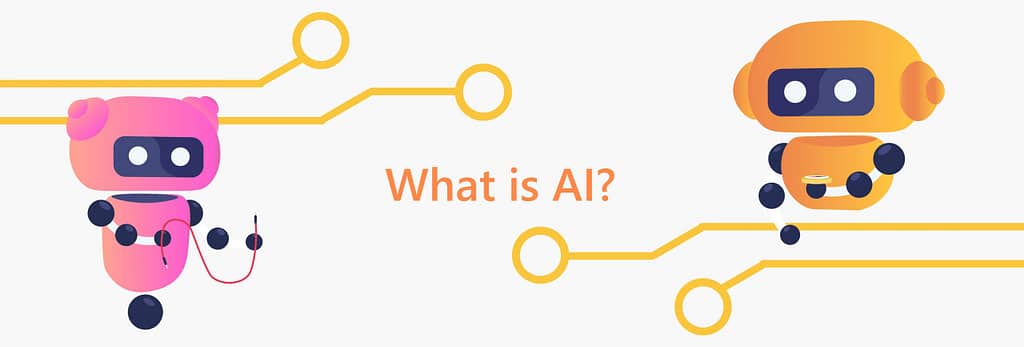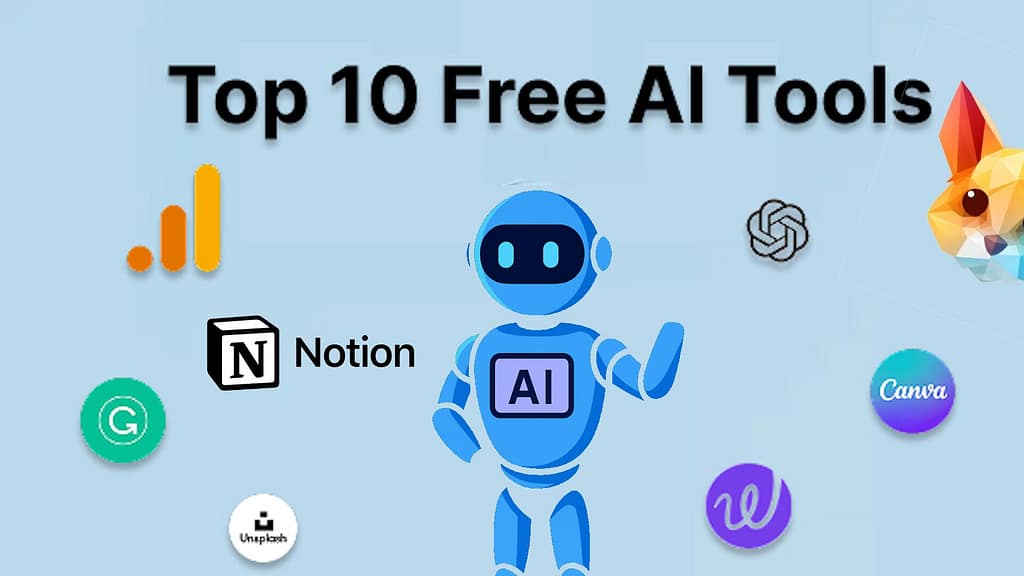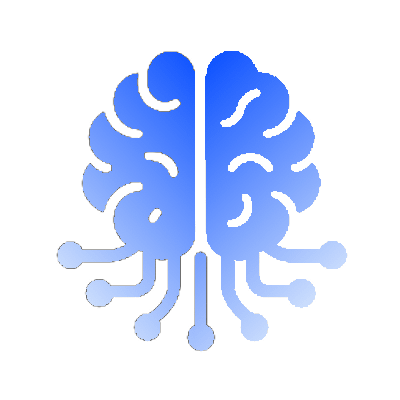
What Is Artificial Intelligence?
A comprehensive, beginner‑friendly guide to AI—what it is, how it works, and why it matters.
Artificial Intelligence (AI) is the field of computer science dedicated to building systems that can perform tasks requiring human-like intelligence — such as learning, reasoning, problem-solving, understanding language, and recognizing images or patterns. Unlike traditional software, which follows fixed rules, AI systems can adapt, improve, and make decisions based on data. Modern AI spans many technologies, including machine learning, deep learning, natural language processing, computer vision, and generative AI, powering applications from voice assistants and recommendation engines to medical diagnostics and self-driving cars.
Table of Contents
Artificial Intelligence refers to computer systems that perform tasks typically requiring human intelligence—such as learning, reasoning, problem‑solving, perception, and decision‑making
Definitions & context
- Britannica: AI is “the ability of a digital computer or computer‑controlled robot to perform tasks commonly associated with intelligent beings,” especially reasoning, meaning‑making, generalization, and learning from experience.
- NASA: AI systems perform tasks under varying, unpredictable circumstances without significant human oversight, and improve based on experience.
- Coursera: AI involves developing systems that mimic human tasks like speech recognition, decision‑making, and pattern identification. It includes branches like ML, deep learning, and NLP.
- Investopedia: AI enables machines to simulate human intelligence and solve problems—this includes technologies like computer vision and NLP.
I can feel overwhelming because of all the technical jargon. To make things clear, here are the most important AI terms explained in plain language — with real-world examples you’ll recognize.
Neural Networks
A neural network is a computer system inspired by how the human brain works. It’s made up of layers of nodes (“neurons”) that process information. Each layer transforms data and passes it to the next, gradually learning patterns.
- Example: A neural network might analyze thousands of cat photos to learn what makes a cat, so it can correctly identify new cat images.
- Why it matters: Neural networks are the foundation of deep learning, powering everything from self-driving cars to voice assistants.
Machine Learning (ML)
Machine Learning is a subset of AI where algorithms improve automatically by finding patterns in data instead of being explicitly programmed.
- Example: Netflix uses ML to suggest shows you’ll probably like based on your viewing history.
- Why it matters: ML is the “engine” behind most modern AI, making systems smarter with more data.
Deep Learning
Deep Learning is an advanced form of ML that uses large, layered neural networks (“deep” networks) to analyze massive datasets.
- Example: Deep learning enables Google Translate to move beyond word-for-word translation and capture context.
- Why it matters: Deep learning breakthroughs triggered the modern AI boom — including image recognition, speech recognition, and generative AI.
Natural Language Processing (NLP)
NLP allows machines to understand, interpret, and generate human language.
- Example: Chatbots, voice assistants, and spam filters all rely on NLP.
- Why it matters: NLP bridges the gap between human communication and machine processing.
Did you know?
Every time you use autocorrect, you’re using NLP.
Computer Vision
Computer Vision gives machines the ability to “see” and interpret images or video.
- Example: Face recognition in smartphones, medical image analysis, and self-driving car navigation.
- Why it matters: It allows AI to interact with the physical world through sight.
The History of Artificial Intelligence: A Timeline

Understanding the history of Artificial Intelligence (AI) helps us see how far the field has come — and why today’s breakthroughs are such a big deal. AI isn’t just a 21st-century buzzword; it’s the result of decades of research, setbacks, and discoveries that shaped the technologies we now use every day.
1950s – The Birth of AI
- Alan Turing and the Turing Test (1950): In his landmark paper “Computing Machinery and Intelligence”, Turing asked the famous question: “Can machines think?”. He proposed the Turing Test as a way to evaluate machine intelligence.
- Dartmouth Workshop (1956): Often called the birthplace of AI as a field, John McCarthy, Marvin Minsky, Nathaniel Rochester, and Claude Shannon formally proposed research into “artificial intelligence.”
1960s – Early Enthusiasm

- AI research gained traction with government funding in the US and UK.
- ELIZA (1966): Joseph Weizenbaum created one of the first chatbots, simulating a psychotherapist through simple pattern recognition.
- Shakey the Robot (1969): The first general-purpose mobile robot, combining perception and movement — a major milestone.
1970s – The First AI Winter
- Expectations were too high. When AI systems failed to meet real-world challenges, funding dried up.
- Rule-based systems struggled with complexity.
- This period became known as the first AI winter, a time of slowed progress.

1990s – AI Becomes Practical
- More efficient algorithms and growing computing power helped AI move into practical use.
- IBM’s Deep Blue (1997) defeated world chess champion Garry Kasparov — a turning point that showed machines could outperform humans in complex games.
- Speech recognition technology began finding its way into consumer products.

2000s – 2020s The Rise of Machine Learning
- Cheap computing power + big data = new breakthroughs.
- Support Vector Machines and other ML methods replaced rule-based approaches.
- AI moved into everyday use: recommendation engines (Amazon, Netflix), spam filters, and early personal assistants.
2010s
- Neural networks made a comeback, now with multiple layers (“deep” learning).
- ImageNet competition (2012): AlexNet’s deep learning model cut error rates dramatically, proving neural networks’ power.
- Everyday tools emerged: Google Translate improvements, Siri/Alexa/Google Assistant, and self-driving car prototypes.
- 2016: AlphaGo beats Lee Sedol — AI mastered the ancient game of Go, once thought impossible for machines.
2020s

- The Generative AI boom (2022 onward): OpenAI’s ChatGPT, Stability AI’s Stable Diffusion, and others showed AI could create text, images, and music.
- Businesses and governments now debate AI regulation, ethics, and the path toward AGI.
- AI has become part of everyday life — from email autocomplete to advanced medical imaging.
Types of AI
Narrow (Weak) AI
Specialised in specific tasks (like voice assistants or recommendation engines)—this is what AI looks like today.
General (Strong / AGI)
A theoretical form of AI that could understand, learn, and apply intelligence broadly, like a human. Still largely hypothetical.
Superintelligence
Intelligence surpassing human capabilities; a topic of speculation and ethical debate.

FAQ
What’s the difference between AI and ML?
Artificial Intelligence (AI) is the broader concept of machines performing tasks that normally require human intelligence, such as understanding language, recognizing patterns, and making decisions.
Machine Learning (ML) is a subset of AI that focuses on enabling systems to learn and improve automatically from data, without being explicitly programmed.
In short: AI is the “goal” — creating intelligent behavior — while ML is one of the key “methods” used to achieve it. Not all AI uses ML, but most modern AI advancements are powered by it.
What is generative AI and how it works
Generative AI creates new content, such as text, images, or music, by learning patterns from existing data and then generating novel content that resembles the training data.
Is AGI real yet?
Artificial General Intelligence (AGI) — AI that can understand, learn, and apply knowledge across a wide range of tasks at human or above-human level — does not exist today.
All current AI systems are examples of narrow AI, meaning they excel at specific tasks but lack broad, human-like reasoning and adaptability.
While some research labs aim to develop AGI, experts debate when or if it will be achieved, and agree that current AI is far from meeting the definition.
